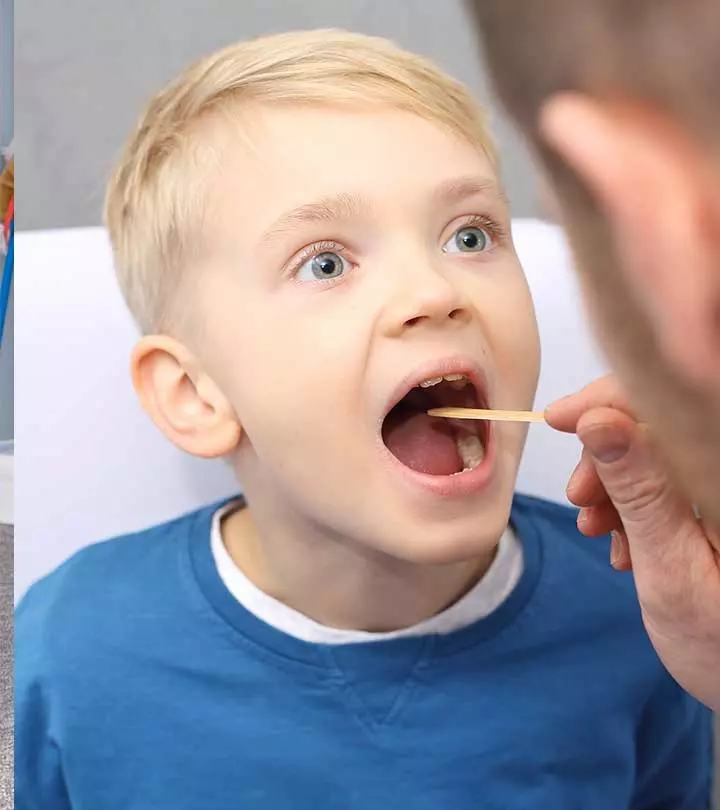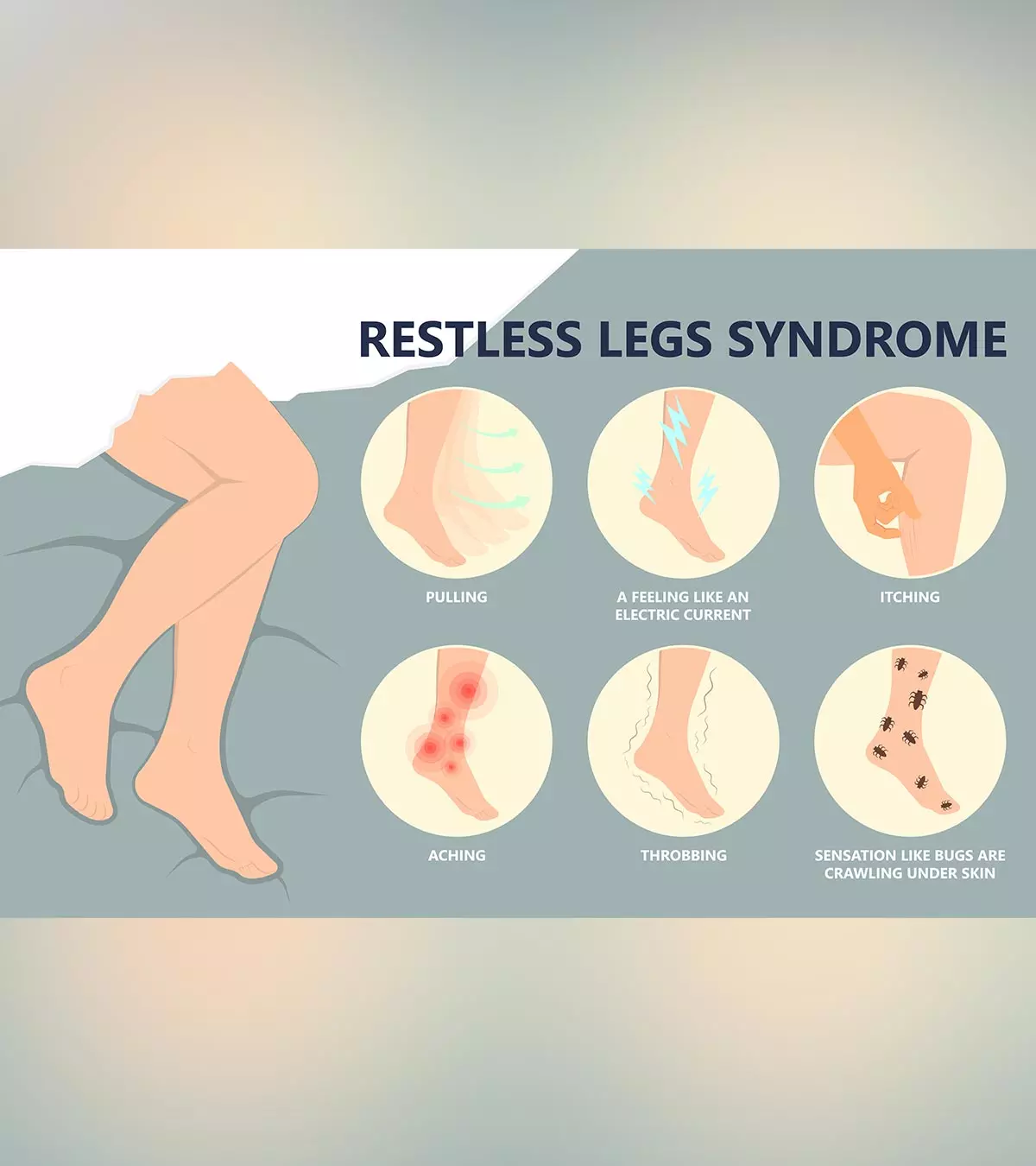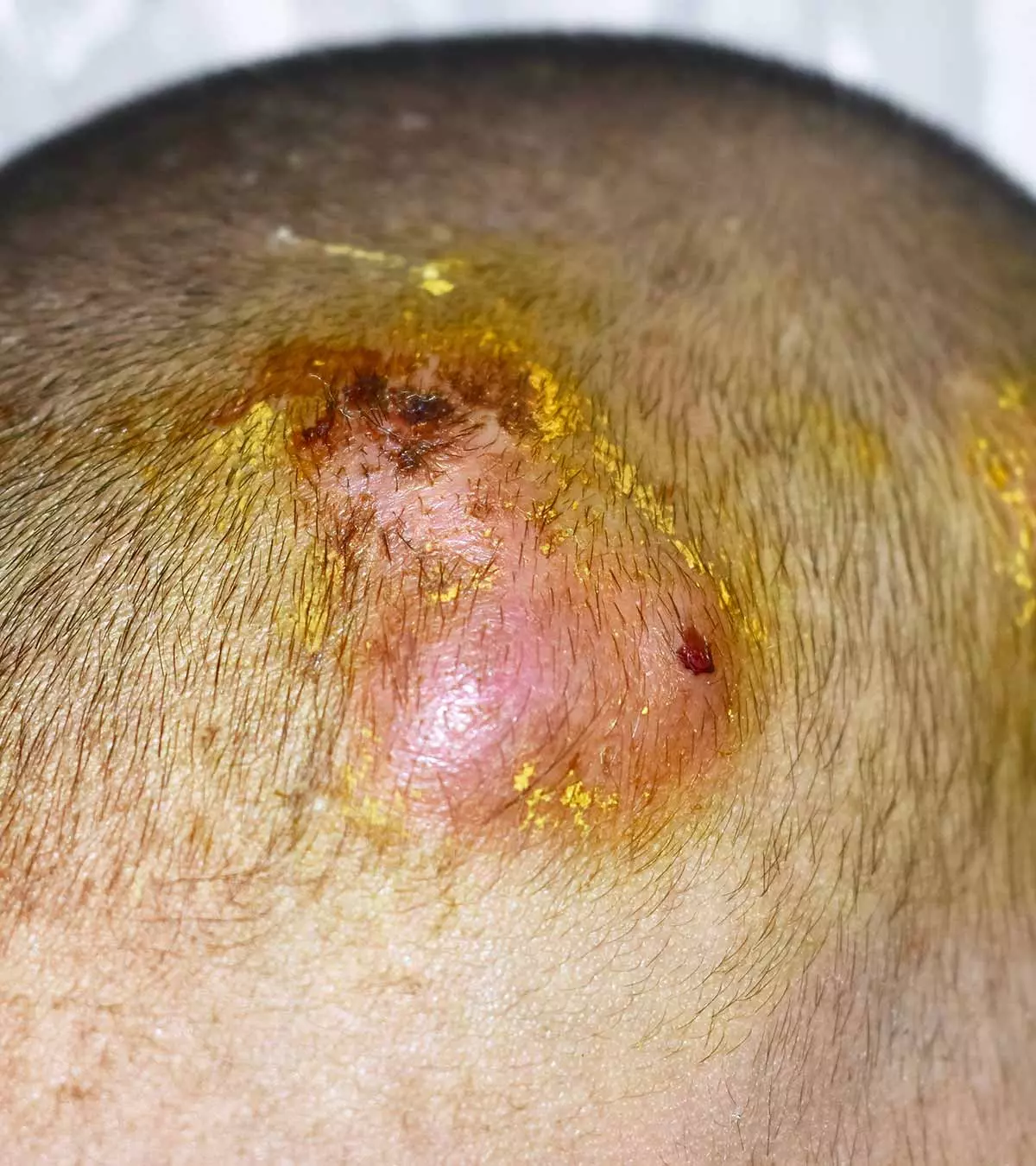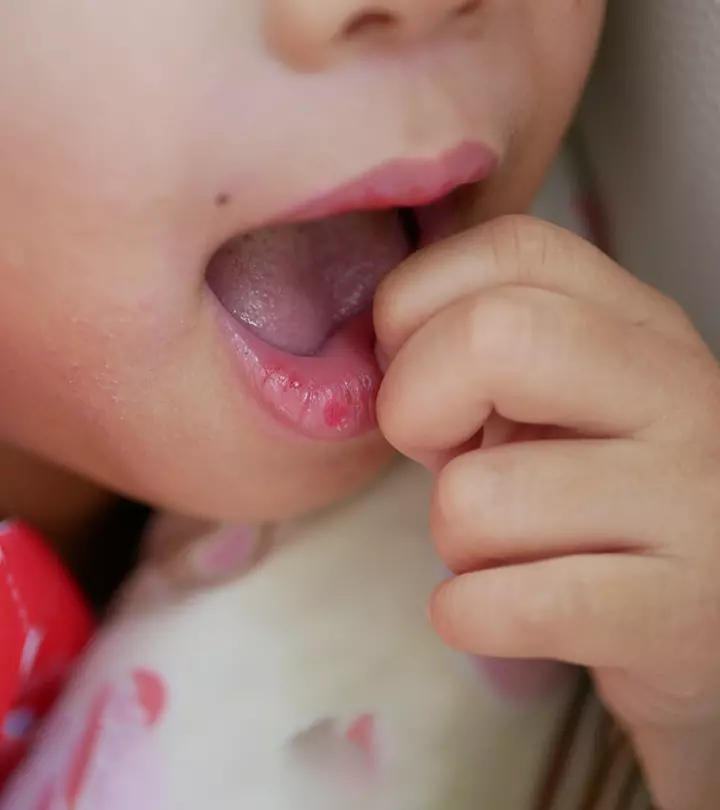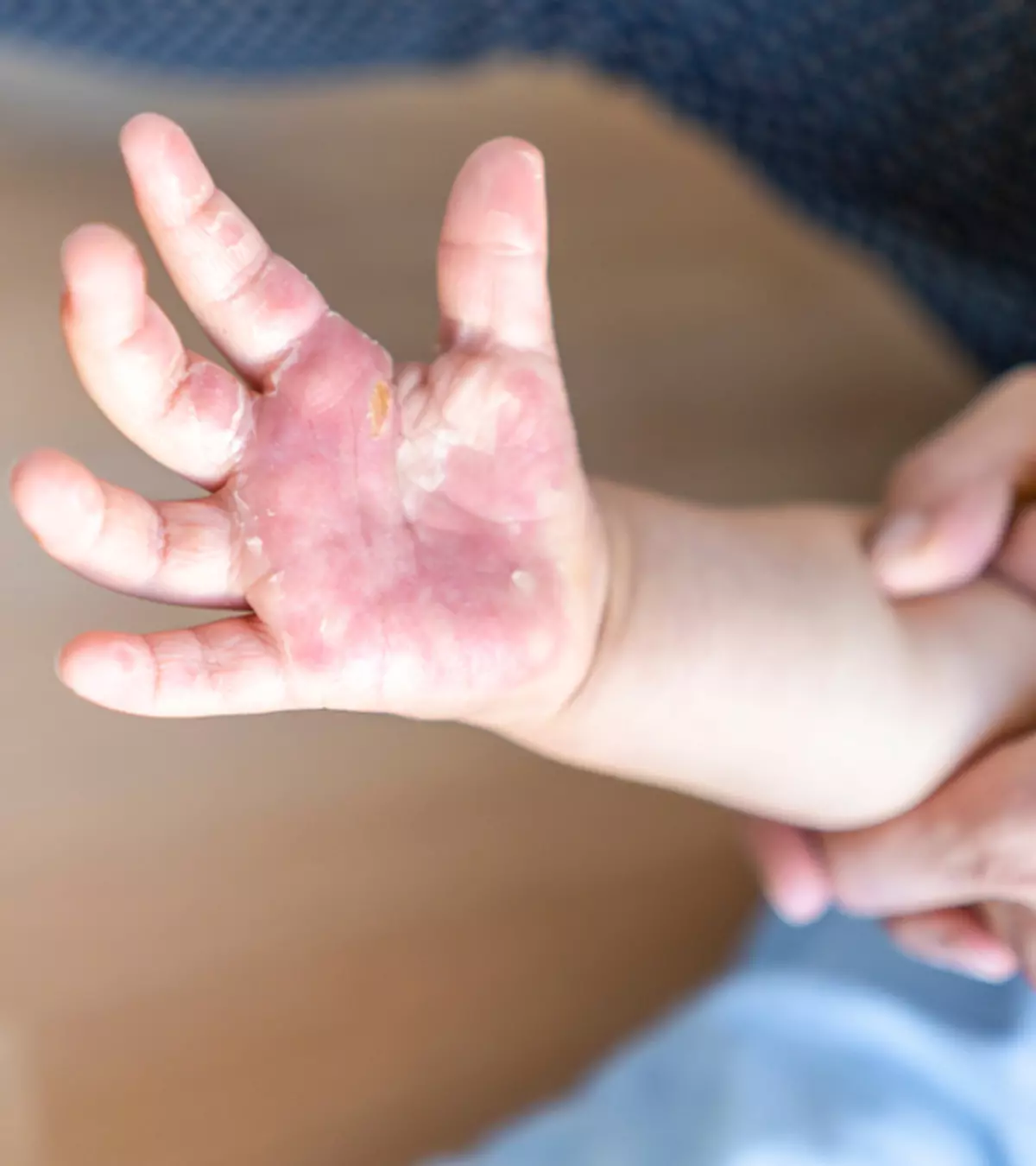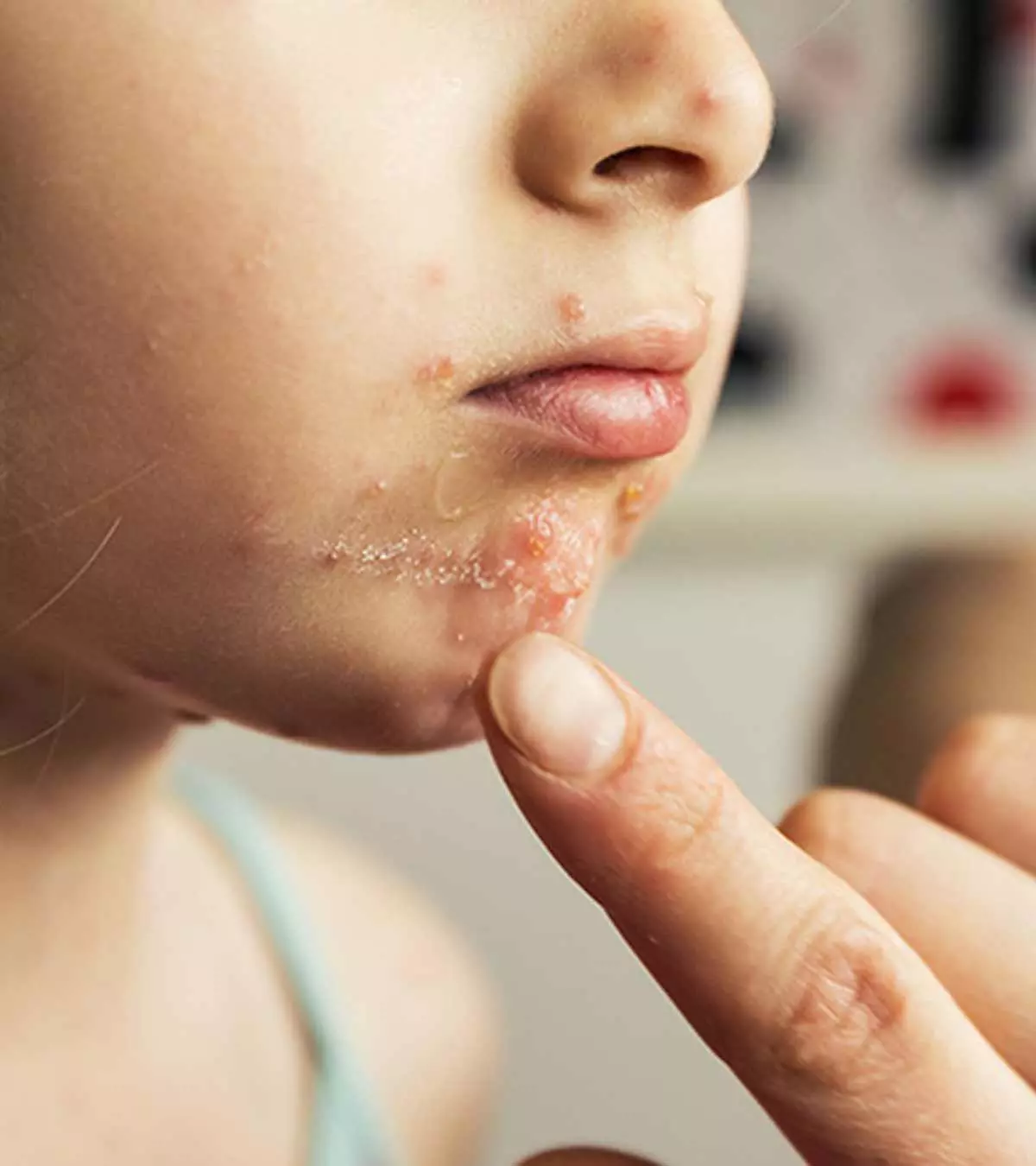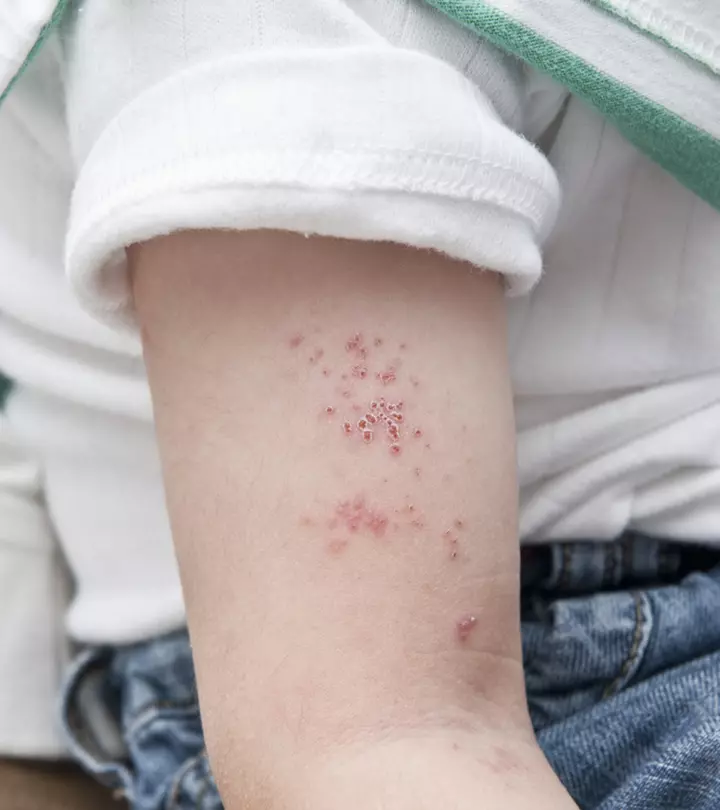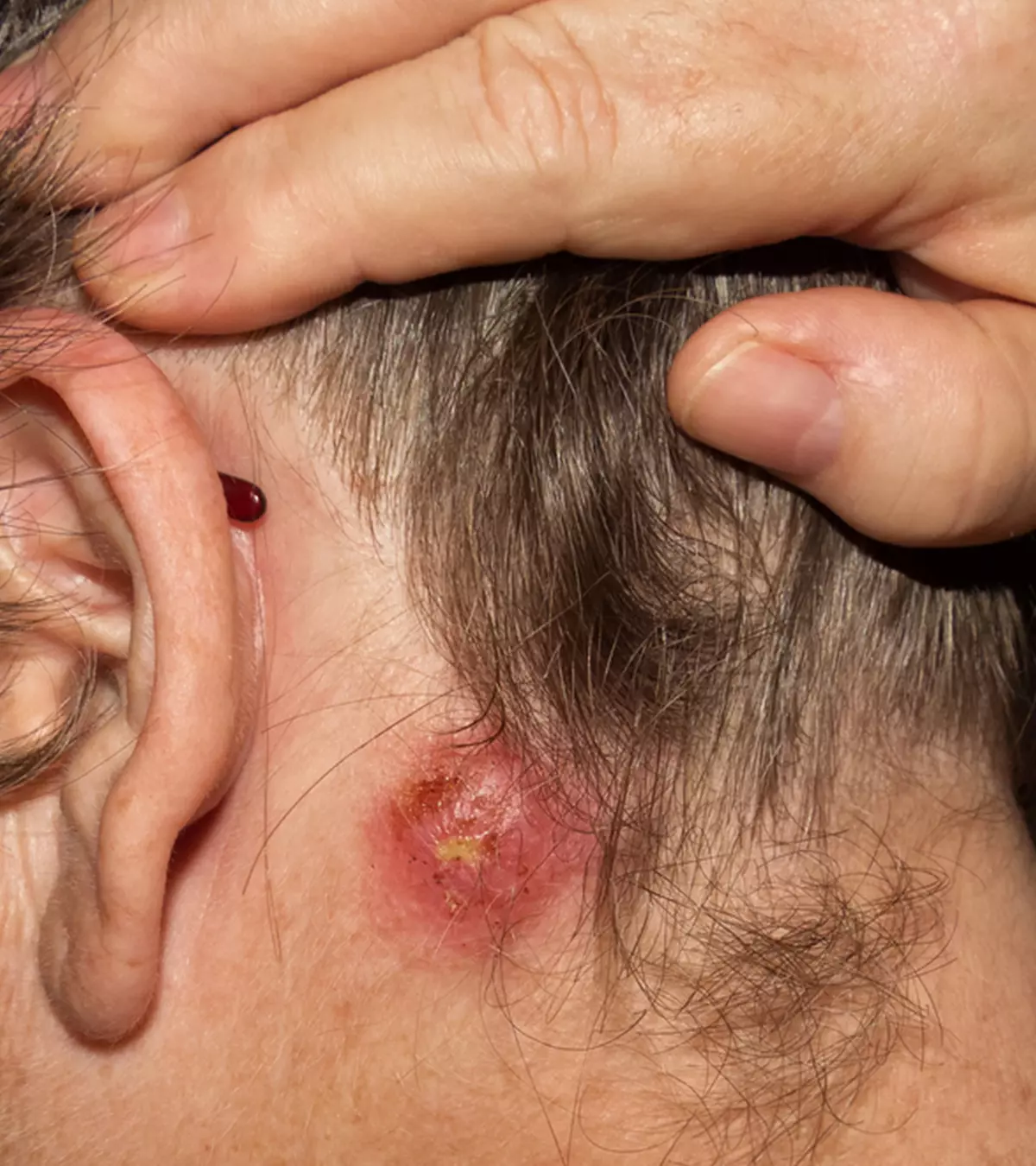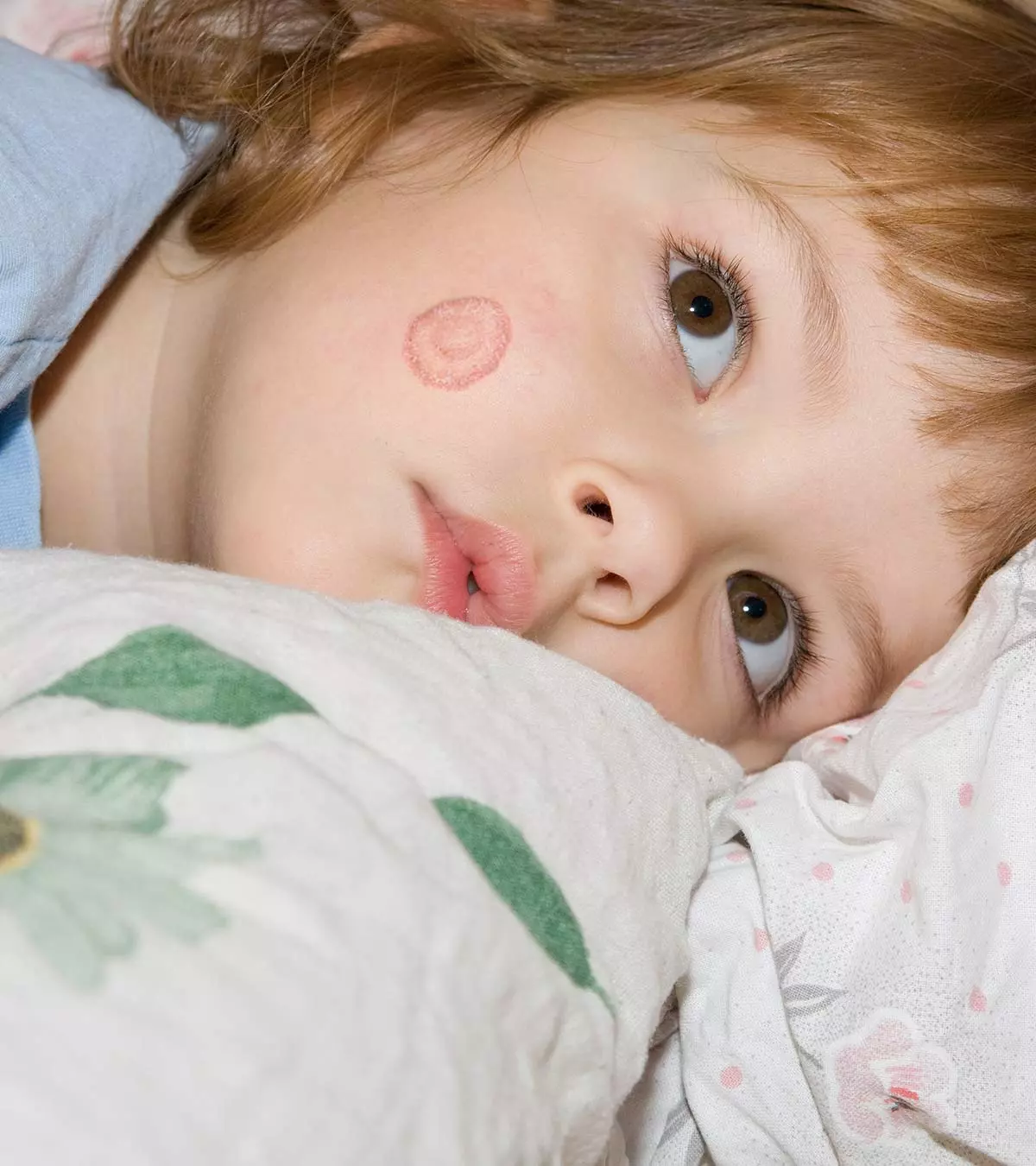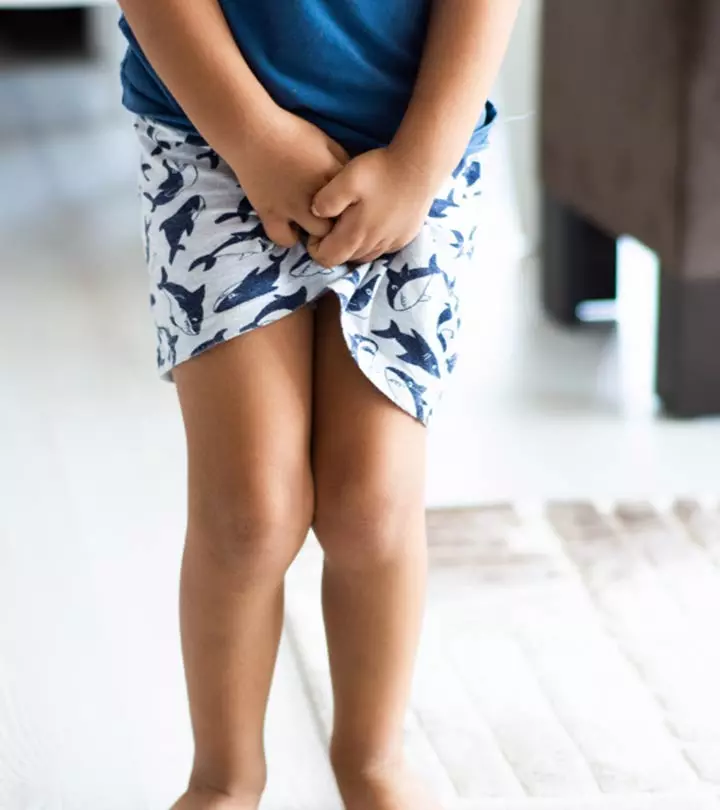
Image: Shutterstock
The groin region refers to the hip area between the abdomen and the thighs. Groin pain in children can result from straining of the muscles, nerves, tendons, ligaments, or bones in the groin region. A muscle injury in the groin may also lead to pain. Children participating in sports may experience it more often, and parents may help them deal with it by seeking medical attention upon the persistence of symptoms.
The following post discusses the causes, symptoms, treatment, and prevention of groin pain in children.
Key Pointers
- Groin pain is a common problem in children caused by sprains, strains, inadequate warm-up, improper heavy lifting, injuries, and medical conditions.
- A doctor’s diagnosis is necessary if pain, swelling, numbness, or movement restrictions persist despite adequate rest and affect daily functioning.
- Physiotherapy, hot or cold therapy, medications, walking aids, and rest can help treat groin pain.
- Core strengthening exercises can also help with treatment.
- Proper warm-up and cool-down, gradual increase in activity intensity or duration, and avoiding muscle overuse can prevent groin pain.
Causes And Risk Factors For Groin Pain In Children
It is difficult to ascertain the exact cause of groin pain in children. Generally, the pain in the groin area develops due to a recent injury to the groin muscles or pelvis. It can occur due to (1) (2)
- A previous injury.
- Heavy lifting and sudden falls.
- Heavy workouts without adequate warm-up, leading to muscle strain or tear.
- Excessive exercise.
- A Sudden change in direction while running, usually in sports.
- The spreading of the legs too far during stretching activities.
- Accidents or injury to the muscle in the groin area.
- The inward turning of the hips, which may impair the hip joint and lead to groin pain.
- Scrotal contusioniA bruise on the scrotum due to trauma , bruise, or injury to the scrotal sac caused due to impact.
- Athletic pubalgia, also known as sports herniai A condition characterized by groin or lower abdominal pain due to reaper twisting of the pelvis in sports such as hockey and soccer .
- Hip problems such as hip rheumatoid arthritisi An autoimmune disease that causes stiffness, swelling, and pain in the hip joints , septic arthritisi A painful infection of the joint caused by viruses, bacteria, or fungi traveling from another infected part of the body , developmental dysplasia of the hip (DDH)iA condition caused due to incomplete development of the hip socket that may sometimes lead to hip dislocation , transient synovitisi An inflammation of the lining of the hip causing pain and limping , femoral epiphysisiA hip disorder in pre-teens and teens in which the ball of the femur detaches from it and slips out of the hip socket , and juvenile idiopathic arthritisiAn inflammation of the bones, tissues, and joints leading to stiffness, pain, and fatigue .
Symptoms Of Groin Pain
The symptoms of groin pain in children can be mild to moderate and heal on their own. In some rare cases, the symptoms can cause severe pain and be persistent. Your child may not be able to express their discomfort due to groin pain, but parents and caregivers can note these signs and symptoms (3).
- Acute hip pain and restricted and painful range of motion of the hip joint
- Abrupt joint pain, thigh pain, or knee pain in children due to adductor strain
- Difficulty lifting the knee
- Unusual walking style due to joint pain
- Tenderness, swelling, and bruising in the groin area
- Reluctance to walk or limping occasionally
- Growth near the testicular or pubic region (genital region)
- Change in skin color in and around the groin area
- Weakness in the legs
When To See A Doctor?
Parents and caregivers should get a doctor’s appointment if the symptoms of groin injury do not get better even after rest. Also, the following signs and symptoms warrant immediate medical attention (4).
- Sudden or acute onset of pain in the groin region and knee pain after some exercise or sports
- Change of color or swelling of the upper thigh region
- Difficulty moving the leg, numbness, or weakness in the leg
Warren Young, a primary sports medicine physician advises, “A mild strain will go away and resolve in two to six weeks, while other injuries like a stress fracture will worsen as you continue or increase your activity. I recommend getting groin pain evaluated after a sudden onset of severe pain or pain that persists and limits your activity (10).”
 Point to consider
Point to considerHow To Treat Groin Pain At Home?
The first step in treating groin pain is to identify the underlying cause. The patients are usually advised to get adequate rest and not involve in strenuous activities. It is essential to adhere to the advice of an orthopedic specialist and perform activity modification.
Groin pain in children usually subsides naturally in a month or two; however, the following actions can help improve muscle strength and speed up the healing process (5) (6) (7).
- Cold therapy: A towel wrapped over an ice bag can be applied to the groin area a few times a day for 10 to 20 minutes to relieve the pain and reduce swelling.
- Warm therapy: A hot water bag or a heating pad can be applied to the groin area once the swelling is gone. A cold and warm treatment may also reduce thigh pain and joint pain.
- Medicine: Prescription pain medications and over-the-counter (OTC) medicines can be taken to get relief. However, consult a doctor to determine the right dose of painkillers for children.
- Addressing the cause: If an exercise or workout routine is the cause of the groin pain in children, it is easy to stop or modify that in particular and allow the body to heal itself. A physiotherapist can provide training and workout guidance to strengthen the muscles and heal injuries.
- Walking aids: To assist walking, a doctor may prescribe walking crutches. A groin support bandage can be applied to wrap the groin area and minimize muscle strain.
- Strength and flexibility: Some pediatric groin injuries, including hip flexor straini An tear in the upper hip muscles that connect to the hip caused by sudden movements and adductor tendinopathyiA condition in which the tendons in the inner thigh and groin area become painful due to repeated strain in the area , are caused due to low flexibility and reduced muscle strength in the region. Such groin injuries can be managed by doing activities that increase core muscle strength.
How To Prevent Groin Pain In Children?
A groin injury or pain can be prevented by letting the child know their strengths and limits and adhering to a healthy warm-up and exercise routine (8). If the child has a history of groin pain, care must be taken to avoid injuries (11) (12).
- Do not overstrain the muscles if pain or weakness is felt and stop doing any exercise until the discomfort subsides.
- Avoid lifting heavy weights before consulting with a physician in case of sudden onset of severe pains.
- Encourage the child to take up a new physical activity or resume a sport at a slow pace. Once they regain their strength and agility, they can gradually increase the intensity and duration.
- A good warm-up routine before playing a sport and a cool-down activity after the session can help avoid muscle injuries.
- Follow an exercise routine to develop good core strength in the body; this will help prevent muscle injuries.
- Put pillows under your hips to lift the hips and thighs when lying down to ensure the groin is raised.
- Ensure the child wears clothing that is not too tight around the groin area.
Frequently Asked Questions
1. How can I support my child during their recovery from groin pain?
To aid your child’s healing from groin pain, make sure they receive adequate rest. Apply ice packs to reduce swelling and offer age-appropriate over-the-counter pain relief. Follow a healthcare professional’s advice for gentle stretching and strengthening exercises. If the pain persists or worsens, consult a doctor.
2. How is groin pain in children diagnosed?
Doctors diagnose groin pain in children by asking about the injury, symptoms, and performing a thorough physical examination. This process involves questioning and assessing to determine the cause of the pain accurately (8). The questions could be about the pain’s location, intensity, duration, or anything triggering. The doctor might also ask whether the pain makes a popping sound or if it radiates to other parts of the body. After the physical examination, the doctor may suggest a few tests (if needed), such as an Ultrasound, X-ray, MRI, or CT scan.
However, it is essential to note that your doctor may not ask you to do all the tests stated above. Groin pain in each child may differ, and the health care provider may only ask you to do the tests if they think they are needed for the child (9).
3. What are the long-term effects of groin pain in children?
The effects of untreated groin pain in children depend on the underlying cause. Groin pain due to constant physical exertion can be relieved with changes in the child’s lifestyle. Severe conditions, such as hernia and hip problems, could lead to worsening pain and other complications, affecting the child’s lifestyle.
Groin pain is common in children and teens who participate in sports and do exercise and heavy workouts. Fortunately, groin pain is not debilitating in most cases, and the child can recover by taking proper rest and following the doctor’s advice. However, if the symptoms persist, a doctor’s advice is necessary to avoid further damage.
Infographic: How To Reduce Groin Strain In Children?
Your child can do groin stretch exercises to reduce or avoid strain-related pain. It is better to seek your doctor’s instructions before beginning groin exercises correctly and safely based on individual factors. Avoid exercises if the child has severe pain. Go through the infographic to know the best exercises for groin strain and when to begin them. Illustration: Momjunction Design Team
References
- Groin Problems and Injuries.
https://www.mottchildren.org/health-library/groin - Groin pain.
https://medlineplus.gov/ency/article/003111.htm - Groin Pain.
https://www.peacehealth.org/medical-topics/id/sig46230spec - Groin pain and when to call a doctor.
https://physio-soton.co.uk/groin-pain-and-when-to-call-a-doctor/ - Groin Strain: Care Instructions.
https://myhealth.alberta.ca/Health/aftercareinformation/pages/conditions.aspx?hwid=abr4623 - Groin Strain in Children: Care Instructions.
https://healthy.kaiserpermanente.org/health-wellness/health-encyclopedia/he.groin-strain-in-children-care-instructions.abr4627 - Groin Pain in the Adolescent Athlete.
https://www.hss.edu/article_groin-pain.asp - P Hölmich et al; (2010); Exercise program for prevention of groin pain in football players: a cluster-randomized trial.
https://pubmed.ncbi.nlm.nih.gov/19883386/ - Groin Pain.
https://my.clevelandclinic.org/health/symptoms/groin-pain - What to Know About Groin Pain: Causes, Treatment and Prevention.
https://www.hss.edu/article_groin-pain.asp - Groin Strain.
https://kidshealth.org/en/teens/groin-strain.html - Groin pain or swelling.
https://www.healthdirect.gov.au/groin-pain-or-swelling
Community Experiences
Join the conversation and become a part of our nurturing community! Share your stories, experiences, and insights to connect with fellow parents.
Read full bio of Dr. Arva M Bhavnagarwala
Read full bio of Anshuman Mohapatra
Read full bio of Dr. Ritika Shah
Read full bio of Vidya Tadapatri







 Quick fact
Quick fact




